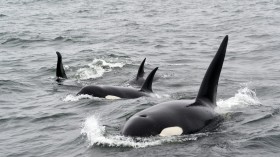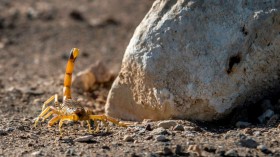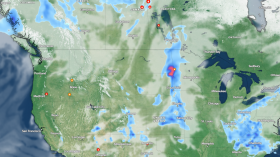The extinct porpoise, Semirostrum ceruttii, had a distinct under-bite, according to a new study.
Porpoises are closely related to dolphins and have a blunt snout. Porpoises can also be distinguished by their triangular dorsal fin (the fin on the back of the mammal).
The ancient porpoise- S. ceruttii- had a prominent extended lower jaw called symphysis, which measured 85 centimeters. The length of symphysis for crown porpoise measures one or two centimeters, according to a news release from Yale University.
S. ceruttii lived in the coast of California millions of years ago. Its fossil remains were found by Richard Cerutti, the collector from the San Diego Natural History Museum and team in 1990s. CT scans have helped researchers better understand the morphology of the extinct animal. The images show that the lower jaw of the porpoise is longer than its upper jaw, meaning that the creature had a unique underbite.
According to the researchers, the porpoise probably used its pronounced lower jaw to feel the ocean floor while looking for its prey.
"The extinct porpoise is a bizarre new animal, with the mandible extending well beyond the beak-like snout, which it may have used for probing and 'skimming' in the substrate," said Rachel Racicot of Yale University. "Although this morphology has been recorded in birds and fish, this is the first described mammal with this anatomy."
Its lower jaw had sensory nerve endings that helped it scan its surroundings. Fossil analysis also showed that the porpoise's optic canals were shorter, meaning that it had poor eyesight.
Currently, black skimmers and small fish called half-beaks have sensory nerves in their lower jaw, which they use to detect prey in low-light conditions.
The ancient porpoise was somewhat similar to modern freshwater river dolphins, researchers said.
"Today we don't find anything resembling river dolphins in the same kinds of habitats that Semirostrum likely occupied," Racicot said in a news release.
The study, "Unique feeding morphology in a new prognathous extinct porpoise from the Pliocene of California," is published in the journal Current Biology.
© 2024 NatureWorldNews.com All rights reserved. Do not reproduce without permission.





